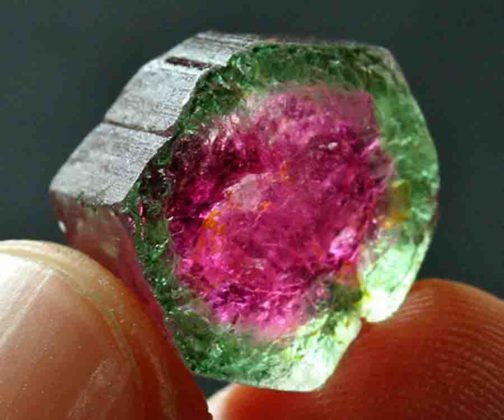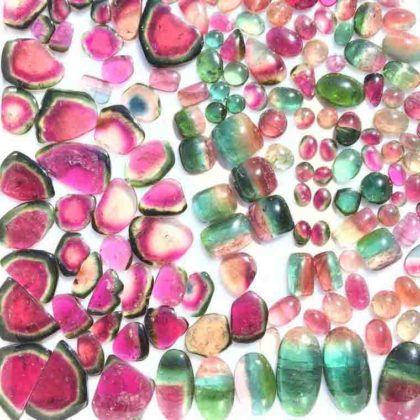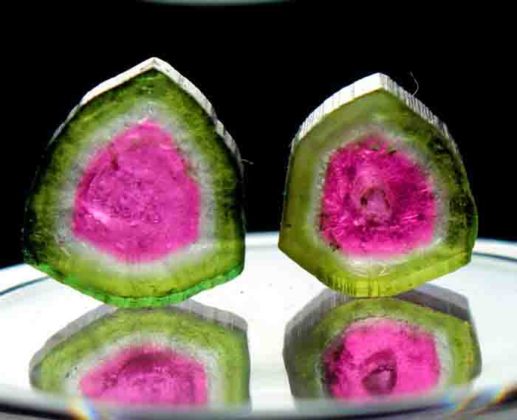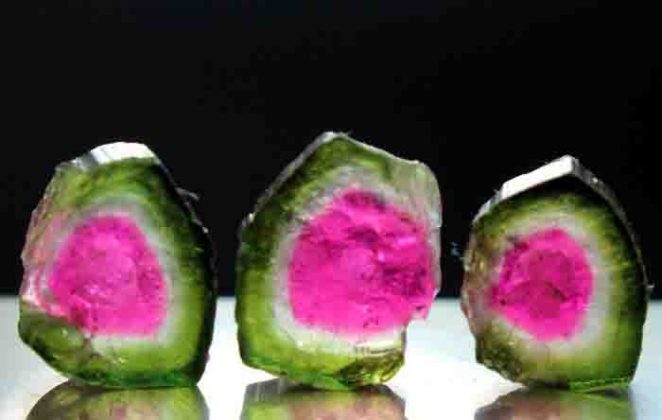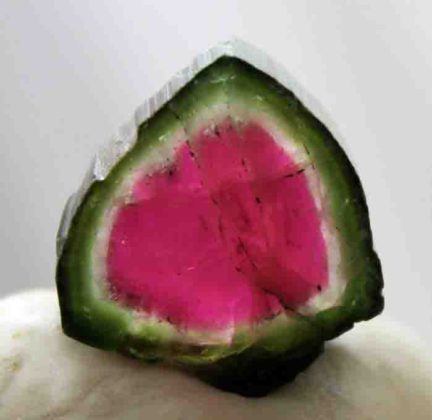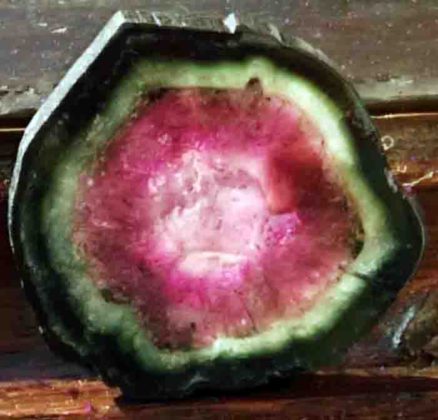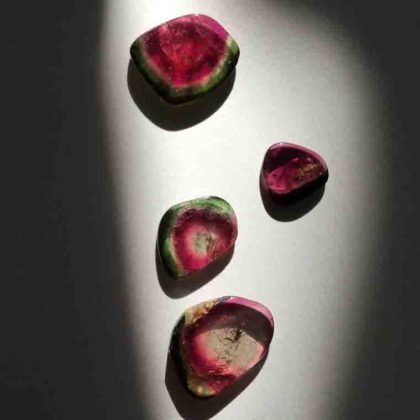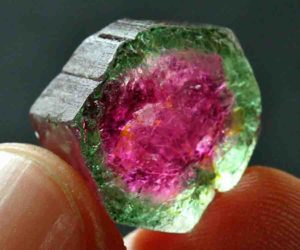
What are watermelon tourmalines?
All gems in the tourmaline family are mixed crystals of aluminium boron silicate that also contain elements such as iron, manganese, sodium, lithium, or potassium. While tourmaline was first discovered in Brazil in the 16th century, the green crystals were initially confused with emerald. It was not until the 19th century that the gem was classified as tourmaline.
Gemmologists now divide tourmalines into 11 different species depending on their properties and chemical composition. Elbaite is the name given to the most colourful members of the tourmaline mineral family. The red or pink tourmalines known as rubellites, the blue variety called indicolite and the coveted Paraiba tourmaline are all Elbaites, as is the multi-coloured watermelon tourmaline.
The term tourmaline was derived from the Singhalese phrase tura mali, meaning “stone mixed with vibrant colours”, and the watermelon prefix refers to the unique colour combination that resembles the fruit of the same name. With a Moh’s scale hardness of 7-7.5, the watermelon tourmaline is a relatively durable stone for jewellery while its distinctive and eye-catching colours mark it out as a favourite with designers.
The History of Tourmaline
The name tourmaline comes from the Singhalese words “toramalli”. These words translate as “mixed gems”. It’s believed that the first tourmalines were discovered by conquistadors in Brazil in the 1500s. At the time, these green tourmalines were assumed to be emeralds. It wasn’t until the 1800s when scientists realized that these stones were their own species of mineral.
Large deposits of tourmaline have been found stateside in Maine and California. They were extremely popular stones in China, who would eagerly buy up American tourmaline specimens as they were discovered. Until 1912, the American tourmaline trade was booming. At that time, the Chinese government collapsed and the demand for the stones plummeted. The trade would pick back up when discoveries of deposits in countries like Brazil, Afghanistan, and Madagascar renewed interest in these multicolored beauties.
Where is watermelon tourmaline found?
Brazil, Nigeria, Madagascar, Afghanistan and the United States all produce watermelon tourmalines. The North American state of Maine, where the gem was first discovered at a mine in Newry in 1902, is renowned for its stunning watermelon tourmaline. In the early 1970s, a large pocket of some of the finest watermelon tourmalines ever seen was unearthed at the nearby Plumbago Gem Pit.
Brazil is also famous for its gem-quality watermelon tourmalines, with amazingly clear and vibrant colours. Gem dealer Matthew Morrell of Direct Source Gems says the most abundant sources of classic red/green watermelon tourmalines are the Araçuaí and São José da Safira regions of Minas Gerais in Brazil.


